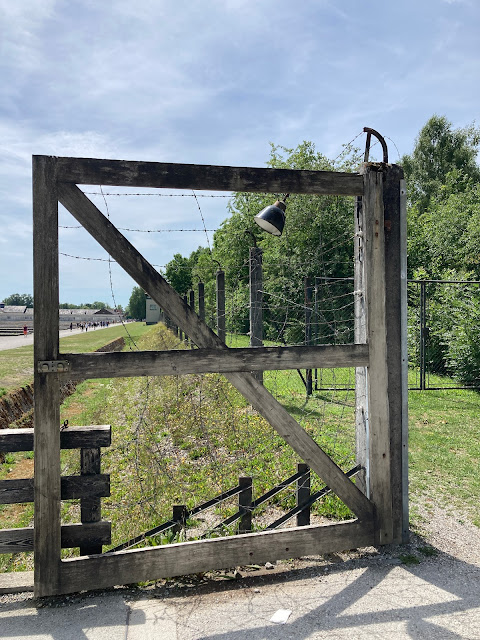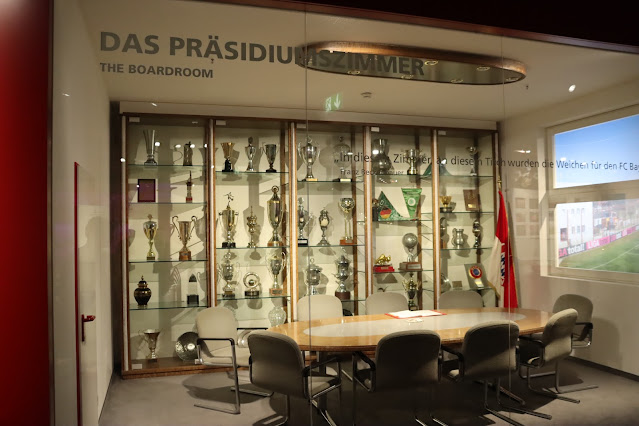Today we left our apartment in Rothenburg and headed south down to Munich. I tried to set up a timelapse driving video as our last few hadn't worked out very well... I'd tried to prop my phone up, but it had inevitably come loose as we drove so the timelapse looked good until suddenly it flipped around and ended up staring at the roof. If I posted any of these I'd expect lots of phone calls from people worried we'd been in a car accident.
This time we used a car mount but had a different issue. After 5 minutes, Apple maps decided to pop up a Siri suggestion "Ding!" "You are 5 minutes away from FeWo, get directions?" (Our previous accommodation). I ignored it. A minute later, "Ding! You are 6 minutes from FeWo, get directions?". Another minute later: "Ding!" "You are 7 minutes away from FeWo, get directions?"
After 5 or 6 of these I got fed up, cancelled the timelapse and searched in settings to disable Siri map suggestions. A minute later: "Ding!" "You are 15 minutes away from FeWo, get directions?"
I contemplated throwing the phone out of the window, but it was a work phone and I could see how that conversation would go:
"Sorry work, yeah, I lost my phone on my Germany trip?"
"Yep, its on a freeway in Bavaria."
"No, no, I know exactly where it is. It's 22 minutes from FeWo."
In the end I uninstalled Apple maps and while it was uninstalling it managed to pop up an additional two notifications.
I'm still not sure what was happening.
It sort up summed up the day - it's not often you start the day at Memorial site, end up at a sport stadium and finish it surrounded by lego models..
Our first stop of the day was Dachau, where we were visiting the Concentration Camp Memorial Site. Not the most fun visit, but an important one. I was surprised by how busy it was. There were multiple school groups present and the car park was almost full.
The Dachau concentration camp was the longest running concentration camp of World War II. Opened in March 1933 it was liberated April 1945. Unlike Auschwitz, the camp was not primarily an extermination camp, however the hard physical labour, terrible conditions, limited food and brutal treatment lead to 32,000 documented deaths at the camp and thousands more undocumented.
The camp was initially planned to hold political opponents but was enlarged to included Jews, Romani, criminals and foreign nationals as a forced labour camp. A primary form of punishment was floggin and tree (or pole) hanging where a prisoner had their hands tied behind their back and was then suspended by a rope attached to their wrists.
Dachau was the basis for all of the later concentration camps. Its gates carried the same message as Auschwitz "Arbeit macht frei" (Work will make you free), which was false encouragement for the workers who were never planned to be released.
A majority of deaths in the camp were caused by malnutrition, disease and suicide, with a typhus epidemic causing almost 15,000 deaths in 1944. At the end of the war, as the allies approached, the majority of the prisoners were sent on a death march to prevent prisoners falling into the allies hands (by order of Himmler). 6,000 - 7,000 prisoners were sent on a march south east before being liberated by a US army battalion. A mass grave of 1071 prisoners was found along the route with deaths estimated to be about 200 a day. When the camp was liberated a large number of bodies were found in the rooms outside the crematorium and on the transport trains.
The camp consisted of 32 barracks (including one for clergy who opposed the Nazis and one for medical experiments). The camp was surrounded by an electrified barbed wire fence a ditch and a wall with seven guard towers.
 |
| The foundations of the former prisoner barracks |
 |
| Looking from the far end of the camp across the barracks towards to utility buildings |
 |
| Ashes of the Unknown Prisoner |
 |
| Reconstruction of the wash basin facilities in the barracks |
 |
| Barrack toilet facilities |
 |
| Bunks for prisoners |
 |
| Lockers for prisoners - each had one locker for their 'personal effects' and all prisoners were expected to keep this common area clean under threat of punishment |
Attached to the side of the camp was a separate area which housed the crematorium yards:
 |
| The crematorium |
I think for me, the most disturbing and daunting thing about the concentration camps was the 'machine' built to dispose of both people and bodies. The system was set up to be one of the most efficient ways to turn living people into disposable ash in the most effective and quickest way. While Dachau was not a full extermination camp, the fact that they had so many bodies piling up that they needed to create a new crematorium to dispose of them is telling of the conditions in the camp. The camp did have a gas chamber (number 5 on the map above). The prisoners were disinfected in the entry rooms (1) to remove lice or disease, then sent through the waiting room to the disrobing room. They were undressed told that they were going to be showered, and then sent through the gas chamber. The gas chamber was labelled with "Brausebad" (Showers) and fitted with fake showerheads.
When the camp was liberated, the Death Chambers (7 and 9) were filled with bodies awaiting cremation.
 |
| The original crematorium, which was not able to keep up and was replaced |
 |
The crematorium
|
The first stop was Allianz Arena, home of the Bayern Munich Football Club. It was a strange shift to move from a Concentration Camp to a Sports Arena.
The plan to build the arena started in 1997 with two Munich clubs (Bayern Munich, who won the Bundesliga (German Football League) and TSV 1860 Munich competing for the UEFA Cup (the former Champions League - Europe Football League) pushing to get a new stadium. The city of Munich wanted to redevelop the existing Olympic Stadium.
The discussion went back and forth for several years and 500 million Deutschmarks were raised but the city was still locked into the idea of redeveloping the existing stadium and the clubs were set on creating a new one. In 2001 Bayern Munich and 1860 Munich formed a coalition and managed to succeed in pushing for a new stadium. A referendum was held in October 2001 to get the citizen's approval and a design competition was held to design the stadium.
The referendum passed by an overwhelming majority and the design shortlist was set in November 2001. The design by Herzog/de Mauron was selected and Allianz AG was chosen as the naming rights sponsor until at least 2021. The foundation stone was laid in October 2002 and the playing field was laid in April 2005, with completion by the end of that month. A trial game between Bayern Munich and 1860 Munich was held on the 20th with teams composed of former stars. 1860 won the game 3-2. The stadium was officially opened in May 2005 and the first match was the Bavarian Derby with 1860 vs Nuremburg on the 30th and Bayern Munich vs the German National team on the 31st.
1860 defeated Nuremburg (3-2) and FC Bayern Munich defeated the German National Team (4-2). In April 2006, Bayern Munich purchased 1860's share of the stadium to become sole owners.
Overall, the stadium cost 340 million Euro and has a capacity of 75,024 seats and 13,342 standing during national games and 70,000 during international games (no standing).
The stadium is surrounded by the largest membrane shell in the world, 2,874 rhomboid inflated ETFE foil panels, forming 66,500 meters squared of roof and façade.
We took the stadium view (the full tours were booked out) and visited the museum and stadium shop.
 |
| Seat Plan |
The store was massive and sold Bayern Munich branded everything from playing shirts to pretzels to BBQs:
 |
| Branded popcorn |
 |
| The Stadium |
 |
| The ramp up the outside of the stadium to the stands |
After parking the car we did a whirlwind tour of Munich. We were all tired from the long day and annoyed after the traffic, so we didn't really tour Munich properly, but we got to see a few of the important sights and most importantly, the biggest Lego store in Germany:
 |
| Spires of Saint Peter's Church |
 |
| Justizpalast (Palace of Justice) |
 |
| St. Michael München |
 |
| Karlstor (Medieval City Gate) |
Back to the hotel for a sleep. It was 30 degrees C in Munich and the top floor of the non air-conditioned hotel got quite warm, but we slept pretty well. Off to Schloss Neuschwanstein and Austria tomorrow.



































































No comments:
Post a Comment